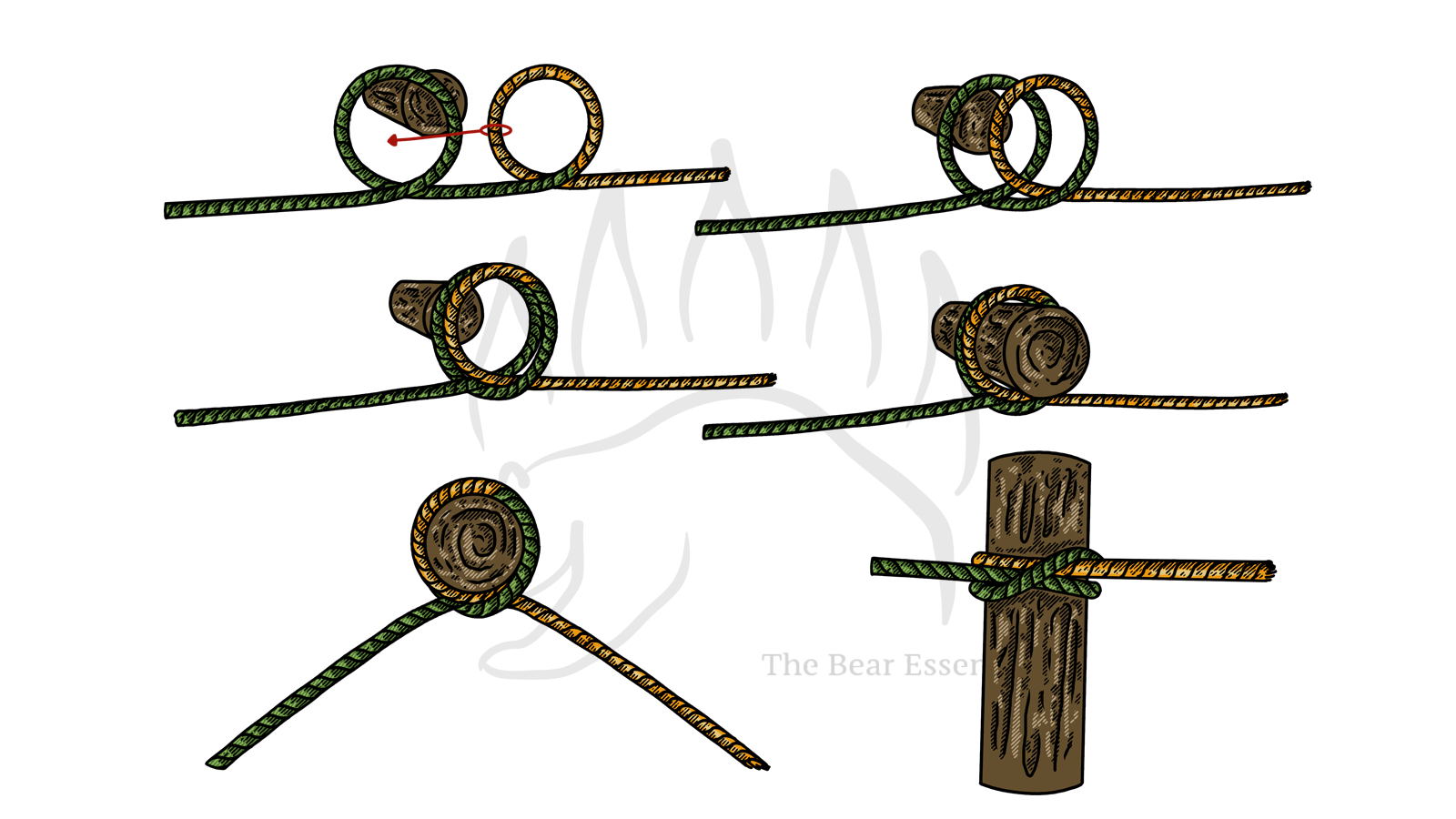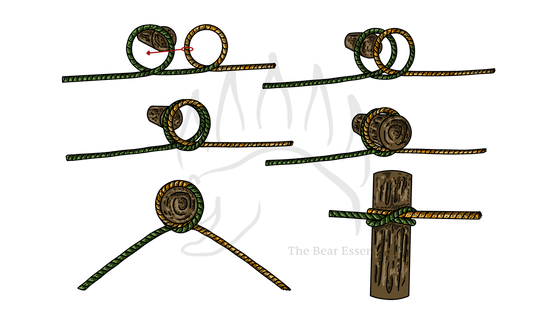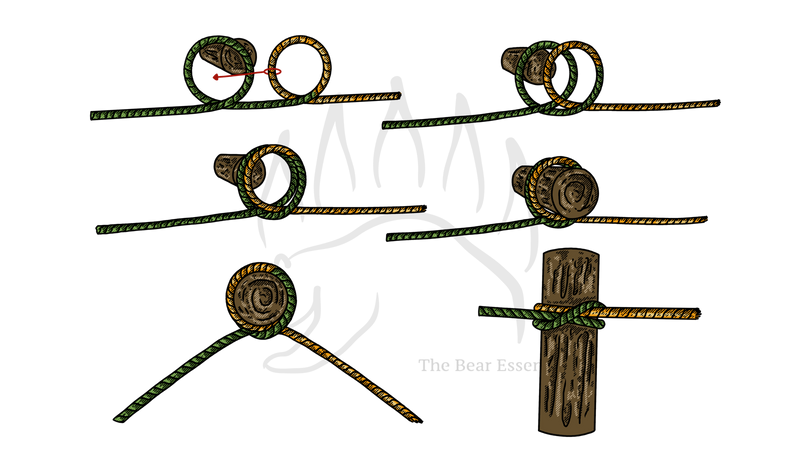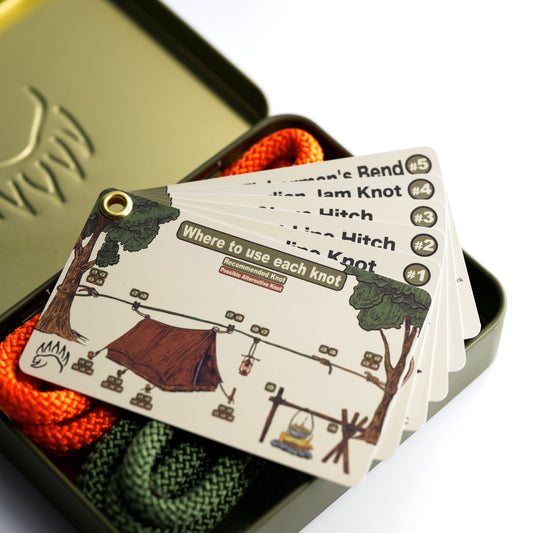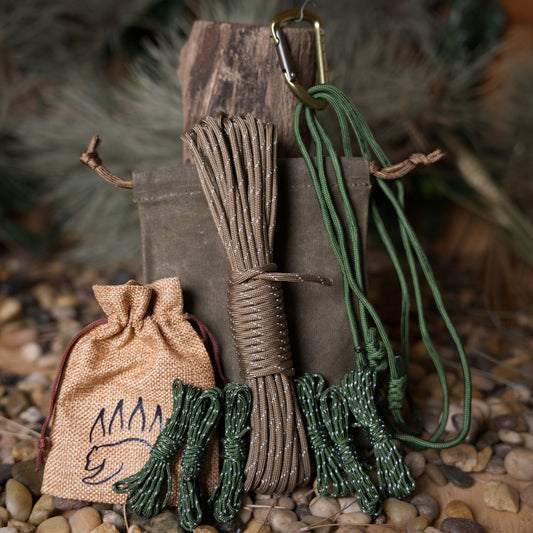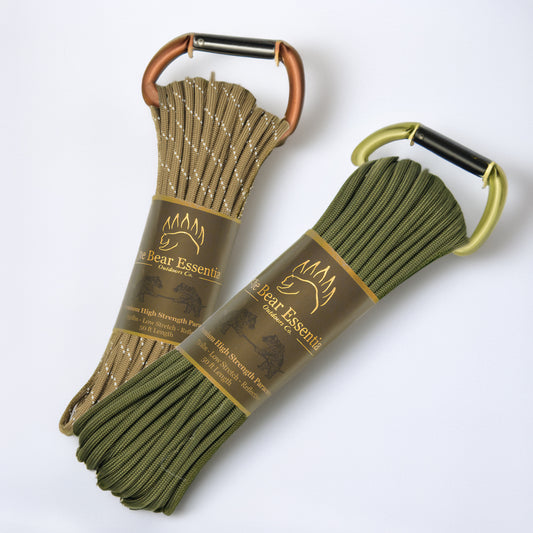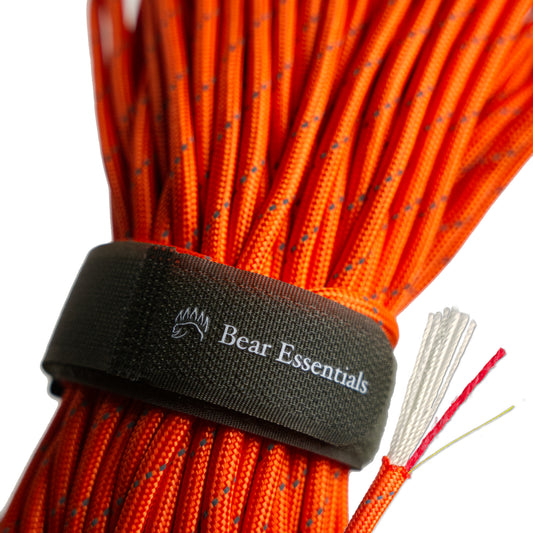How to Tie the Clove Hitch on a Bight
Usage
The Clove Hitch on a Bight is a variation of the standard Clove Hitch that allows it to be tied midline, without access to the rope's ends. This feature makes it particularly useful in climbing, rigging, and utility applications where a quick attachment to a post, stake, or carabiner is needed. However, like the traditional Clove Hitch, it is not recommended for critical load-bearing situations as it can slip under extreme strain.
Why Learn the Clove Hitch on a Bight?
This knot is fast to tie, easy to adjust, and does not require access to the rope’s ends. It is an efficient solution when setting up anchors, securing loads, or creating temporary tie-off points. However, its tendency to slip under shifting loads means it should be backed up or used only in non-critical applications.
Common Uses
-
Climbing & Mountaineering:
- Used for quick midline attachment to carabiners or anchors.
- Helps secure gear and ropes on multi-pitch climbs.
- Camping & Bushcraft: Attaching tarps, securing shelters, and fastening gear.
- General Utility & Rigging: Temporary rope fastening for rigging projects.
ABOK Number
(Ashley Book of Knots)
Other Names
TypeHitches
Binding Knots
|
Notable Features
- Quick to Tie & Untie: A simple and fast attachment method.
- Adjustable Midline Knot: Can be tied anywhere along a rope’s length.
- Prone to Slipping: Should not be used for critical load-bearing applications.
Variations
- Adding extra half hitches increases friction and security, reducing the risk of slipping.
- Ensuring proper dressing of the knot helps maintain structure and minimizes the chances of failure under load.
Similar Knots
Constrictor on a Bight vs. Clove Hitch on a Bight
- Pros: More secure than the Clove Hitch on a Bight.
- Cons: Harder to untie after being loaded.
Standard Clove Hitch vs. Clove Hitch on a Bight
- Pros: A basic and versatile hitch.
- Cons: Requires rope ends to tie, unlike the bight variation.
Round Turn and Two Half Hitches vs. Clove Hitch on a Bight
- Pros: More stable under tension than the Clove Hitch.
- Cons: Slightly more complex to tie.
History
The Clove Hitch has a long history in maritime, climbing, and general utility applications, dating back to at least the 16th century. Its name was first documented by William Falconer in 1769 in Universal Dictionary of the Marine. The on-a-bight variation evolved as a faster, more convenient way to secure a midline attachment without threading rope ends through loops. Ashley, Clifford W. The Ashley Book of Knots. Doubleday, 1944, p. 214, knot #1177.
Security Level
The Clove Hitch on a Bight is a moderately secure knot, best suited for temporary applications. If additional security is needed, extra hitches or alternative knots should be used to prevent accidental loosening.
Downsides
- Can Slip Under Load: Must be monitored if tension fluctuates.
- Not Suitable for Critical Applications: Should not be used for life-supporting tasks.
Structure
- Form a bight in the rope.
- Twist the bight to form two overlapping loops.
- Slip both loops over the object being secured.
- Pull the standing ends to tighten the knot.
Pro Tip: Ensure the loops remain aligned to prevent slipping under tension.
FAQ
What is the Clove Hitch on a Bight used for?
It is used for quick midline attachments where access to rope ends is not possible.
How does it compare to the standard Clove Hitch?
It can be tied midline without access to rope ends but retains the same structure.
Can the Clove Hitch on a Bight hold heavy loads?
No, it is not recommended for heavy or critical loads.
Is the Clove Hitch on a Bight easy to untie?
Yes, it can be untied quickly unless loaded under extreme tension.
Important Notes on Safety
The Clove Hitch on a Bight is a quick, non-critical knot for temporary use. Always ensure proper backup knots are used in situations where security is essential.
